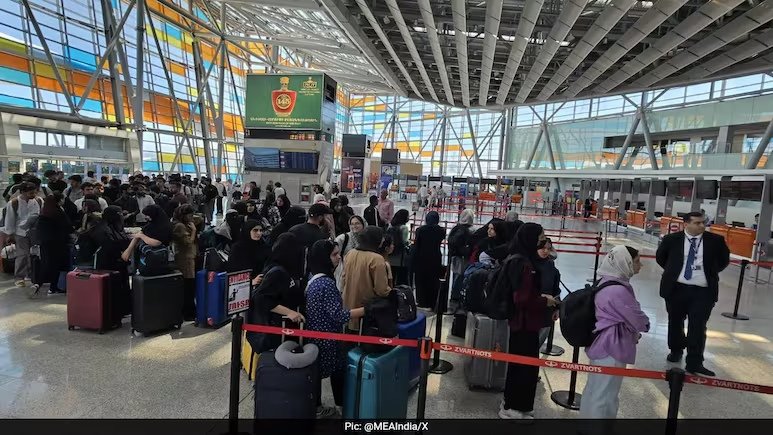Iran has opened its previously restricted airspace available solely for Indian evacuation flights. A minimum of 1,000 Indian students trapped in conflict-affected Iranian cities are anticipated to arrive in Delhi within the next two days through the government’s emergency evacuation initiative, Operation Sindhu.
The initial flight is set to arrive at 11:00 PM IST this evening. The second and third flights are planned for Saturday, one in the morning and another in the night.
Iranian airspace is still shut to the majority of international flights due to continued missile exchanges and drone assaults between Israeli and Iranian military forces. India has received a designated corridor to facilitate the evacuation of its students.
India had launched ‘Operation Sindhu’ on Wednesday
On Wednesday, India declared the initiation of ‘Operation Sindhu’ to bring back Indian citizens from Iran as the conflict between the Persian Gulf country and Israel continued unabated. Officials from the Iranian embassy in Delhi reported that the Iranian foreign ministry maintained close communication with the Indian mission in Tehran following injuries to some students.
“India accords highest priority to the safety and security of Indian nationals abroad,” the Ministry of External Affairs (MEA) said in a statement.
ALSO READ: Decoded: How Stress Can Cause Cognitive Impairment?
Over 4,000 Indian citizens reside in Iran, with around half being students. As per official MEA updates, 110 Indian students were rescued from northern Iran earlier this week and taken to Yerevan, Armenia by land.
The evacuation was executed through tight coordination between India’s embassies in Tehran and Yerevan. They took a special flight from Yerevan at 14:55 on 18 June, arriving in New Delhi in the early morning of 19 June.
Many of these students attended Urmia Medical University located in Iran’s West Azerbaijan province, near the Turkish border, an area that has experienced missile activity and troop movements recently.
Iran-Israel Conflict
The recent conflict started when Israel initiated ‘Operation Rising Lion’ aimed at Iran’s nuclear facilities. This triggered extensive retaliatory strikes from Tehran, involving missile barrages and drone attacks that have allegedly resulted in the deaths of more than 20 civilians in Israeli cities and injured several hundred.

On Wednesday, Israeli aircraft conducted several attacks close to Tehran, with observers noting evacuations in the northern areas of the capital. By evening, the Israeli Defence Forces (IDF) asserted that they had attacked a nuclear facility, whereas Iranian state media indicated the launch of hypersonic missiles directed at Israeli military sites.
As the conflict between Israel and Iran reaches its 8th day, both nations traded intense missile and drone strikes on Friday. Israel targeted Iran’s nuclear facilities with airstrikes.
Tehran responded by launching missiles equipped with cluster munitions, marking the initial documented use of these weapons in the current conflict, including an attack that hit an Israeli hospital.













